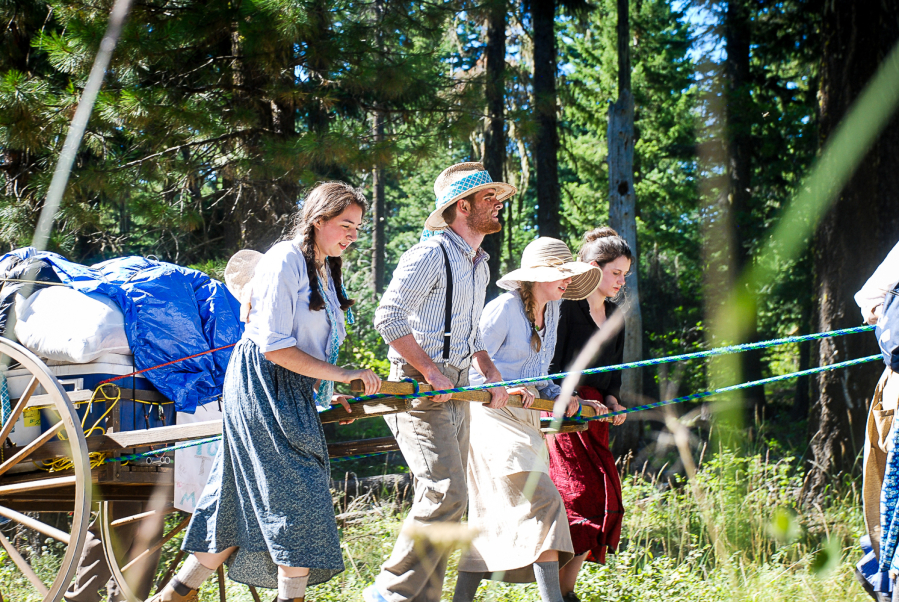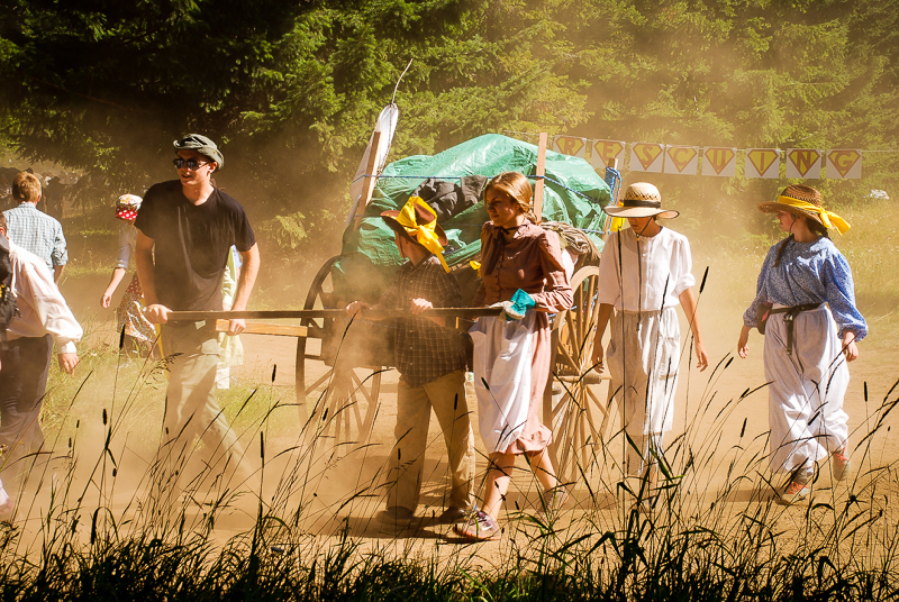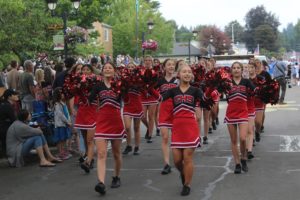Two-hundred seventy local youth recently spent time away from the traditional comforts of home, to get a taste of what life was like for Mormon pioneers more than 170 years ago.
These young members of the Vancouver East Stake of the Church of Jesus Christ of Latter-day Saints, along with 130 adult leaders, ventured out on a physically demanding pioneer trek reenactment July 27 to 30, near Trout Lake.
The re-enactors spent four days without any modern conveniences such as computers, cell phones, iPads, watches, cameras and make-up.
Instead, they dressed in traditional pioneer-style clothing, and walked up to 13 miles per day pulling a handcart that was filled with necessities including sleeping bags, water, and a collection of large containers — one for each participant. The 5 gallon buckets held personal items including a change of clothes, scriptures, journal, mess kit, soap, towel, small first aid kit, extra socks and underwear.
Participants were divided into groups of “families,” that included 10 unrelated kids and two adult leaders, referred to as “Ma and Pa,” They sang, danced, worked and ate together. There were no showers and they all slept under the stars in sleeping bags.



